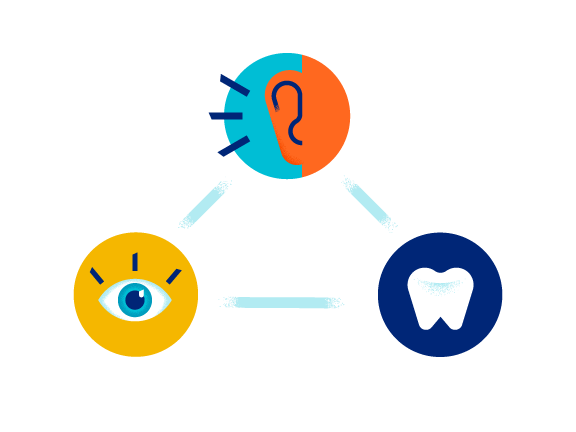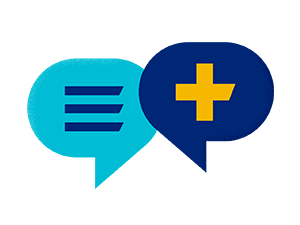Browse Medicare Advantage (Part C) plans
What are Medicare Advantage plans?
Medicare Advantage (Part C) plans offer all the benefits of Original Medicare (Part A and Part B), with extras like dental, vision, and hearing benefits. Some offer health and wellness benefits, like a gym membership. Most include Part D prescription drug coverage.
Why should I choose a UnitedHealthcare Medicare Advantage plan?
UnitedHealthcare is America’s most chosen Medicare Advantage brand.1
Members rely on UnitedHealthcare Medicare Advantage plans for:
Extensive care nework
Large network of Medicare Advantage providers, including doctors and specialists
UCard®
The UCard®, only from UnitedHealthcare, opens doors to a large network of Medicare Advantage providers and rewards for healthy activities4
What Medicare Advantage plans are available from UnitedHealthcare?
Depending where you live and your situation, UnitedHealthcare may offer several types of Medicare Advantage plans, including Health Maintenance Organization (HMO) plans, Preferred Provider Organization (PPO) plans, Private Fee-for-Service (PFFS) plans, and Special Needs plans (SNPs). Not all plans are available in all areas.
How much does a Medicare Advantage plan cost?
A Medicare Advantage plan may have a variety of costs: a premium you pay for the plan, a deductible you pay for services until coverage begins, and cost sharing like copayments and coinsurance for some of the care you receive.
Am I eligible and when can I enroll?
Who is eligible for a Medicare Advantage plan?
Most people become eligible for Medicare coverage when they turn 65 or have a qualifying disability or medical condition. Medicare is available to U.S. citizens and legal residents who have lived in the United States for at least 5 years in a row before applying.
Anyone who is eligible for Medicare coverage can enroll in a Medicare Advantage plan if they live in the plan's service area.
When can I enroll in a Medicare Advantage plan?
You can enroll when you first become eligible, in your Initial Enrollment Period (IEP). If you already have Medicare coverage and want a different plan type, you can change during:
- The Annual Enrollment Period (AEP), October 15 to December 7
- The Medicare Advantage Open Enrollment Period (MA OEP), January 1 to March 31
- A Special Enrollment Period (SEP) for qualifying life events; rates vary
Medicare Advantage plans from UnitedHealthcare may include:
How do I enroll?
Before you can enroll in a Medicare Advantage plan, you need to be enrolled in Original Medicare (Part A and Part B). Then:
- Find insurance providers who offer Medicare Advantage plans in your area
- Explore those plans online or call the provider directly to learn more
- Find the plan that best fits your needs and budget
- Enroll with the plan provider online, by phone, or with an agent
The UnitedHealthcare Right Plan Promise®
Be confident in your choice of Medicare plan
Our commitment to helping you find the right UnitedHealthcare Medicare plan. Enter your ZIP code and tell us what you want most, like included dental coverage, extra benefits, low monthly premiums and more.5
You've got questions.
We've got answers.
Chat with UnitedHealthcare
Chat is currently unavailable.
Please try again later.
Find a plan
Meet with us
Make an appointment with a licensed insurance agent in your area.
Footnotes
Benefits, features and/or devices may vary by plan/area. Limitations, exclusions and/or network restrictions may apply. Provider network may vary in local market.
1 Most chosen based on total plan enrollment from Medicare Enrollment Data, May 2025.
2 Reward offerings may vary by plan and are not available in all plans. By participating in the program or accessing rewards funds, you agree to the Reward program Terms of Service.
3 Virtual visits may require video-enabled smartphone or other device. Not for use in emergencies. Not all network providers offer virtual care.
4 OTC benefits have expiration timeframes. Call your plan or review your Evidence of Coverage (EOC) for more information.
5 The Right Plan Promise® is our commitment to provide you with tools and agent/producer support to help you find a plan in UnitedHealthcare’s Medicare plan portfolio that meets your needs. It is not a guarantee that UnitedHealthcare offers a plan that meets the needs of every consumer. Plan recommendations are based on the information that you provide regarding your health coverage needs. Requests to disenroll or change plans remain subject to applicable Medicare regulations and Federal and state laws/regulations.



